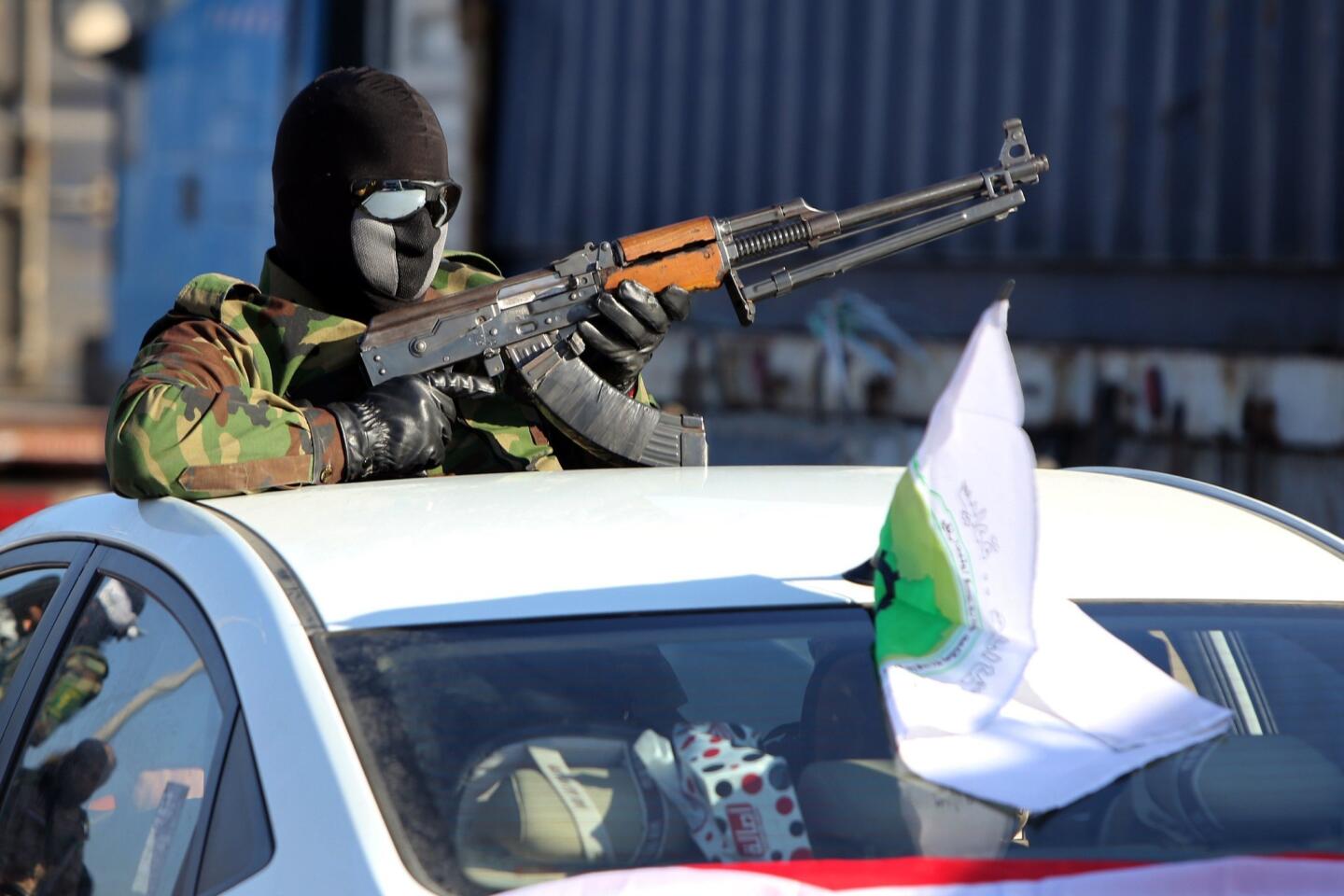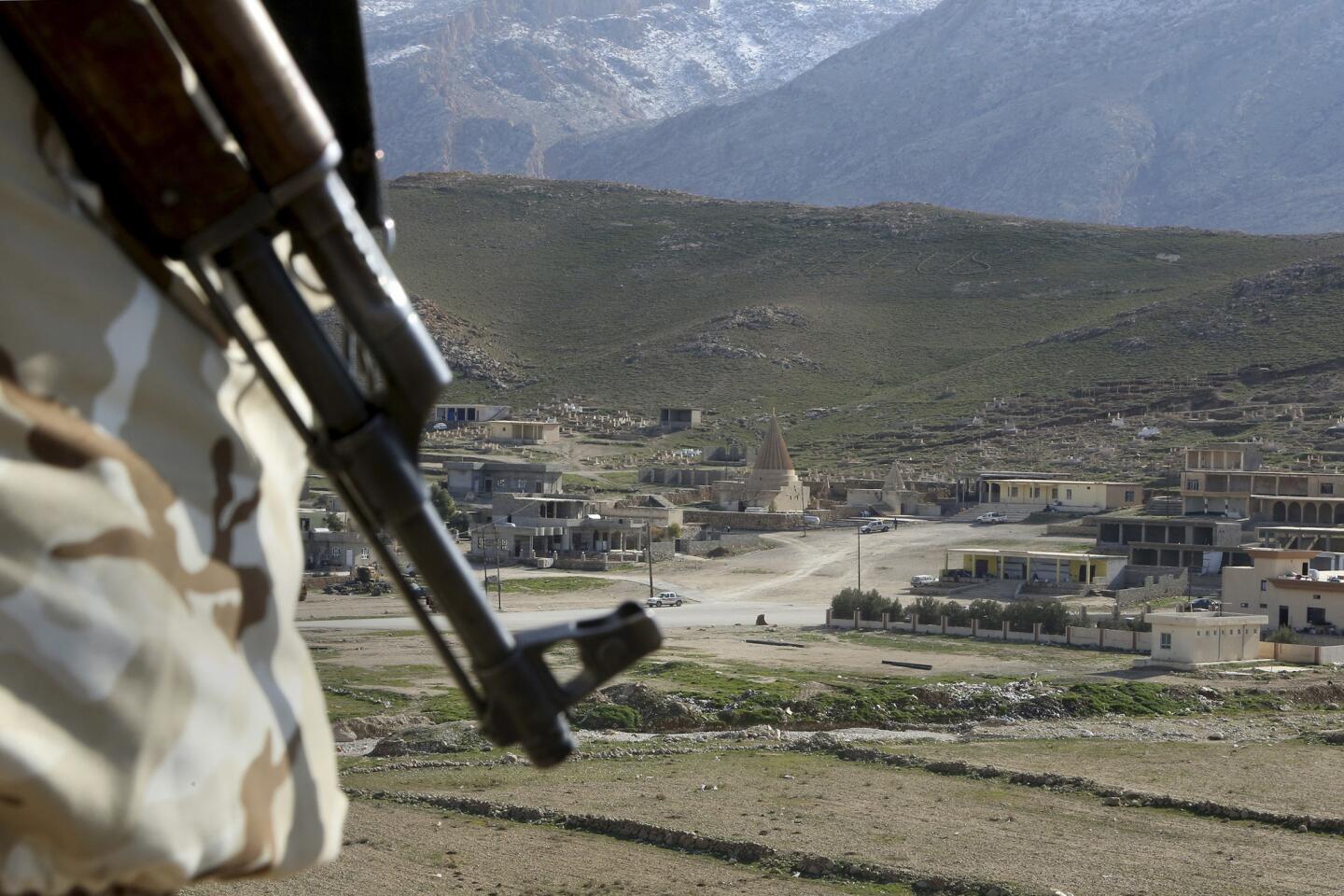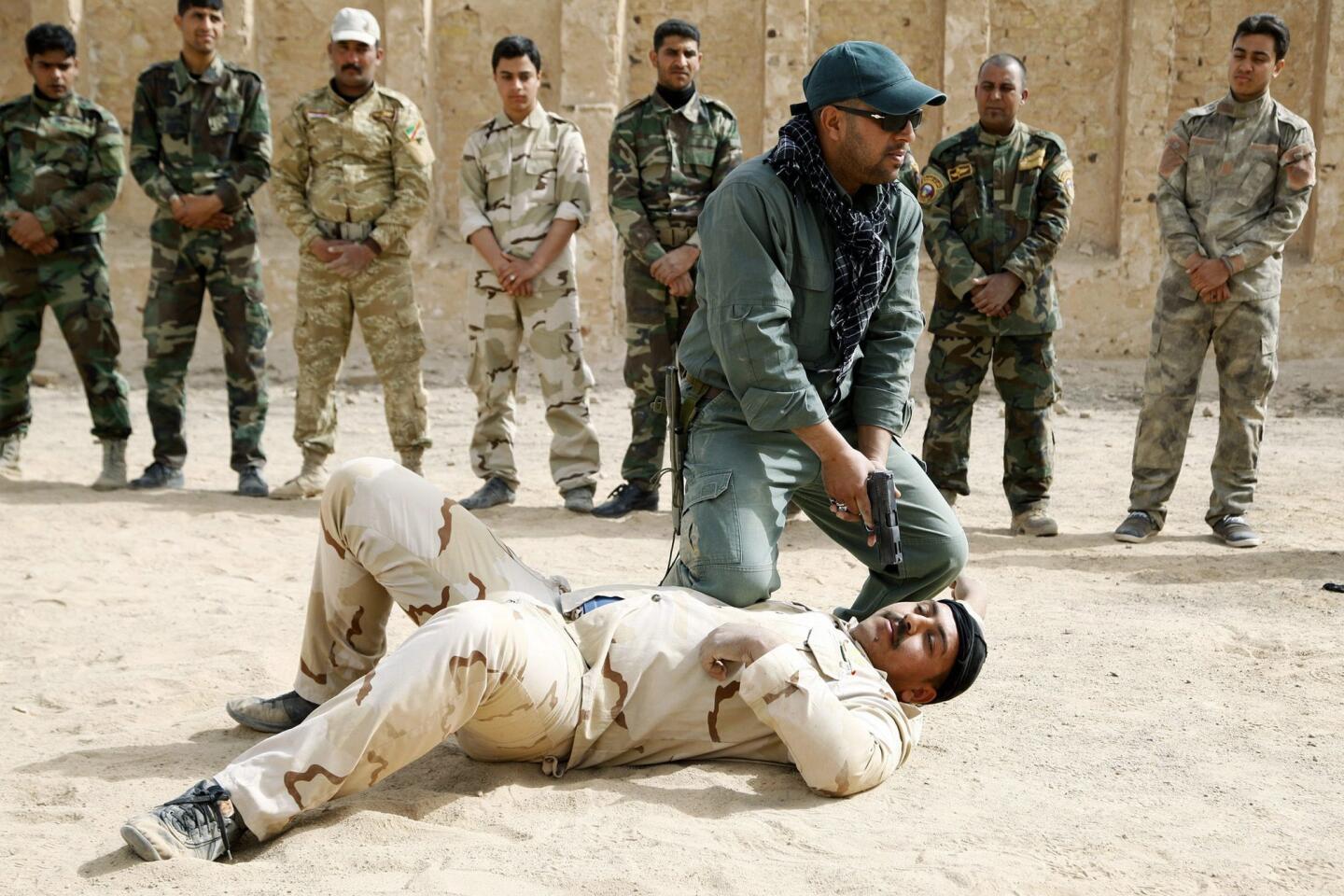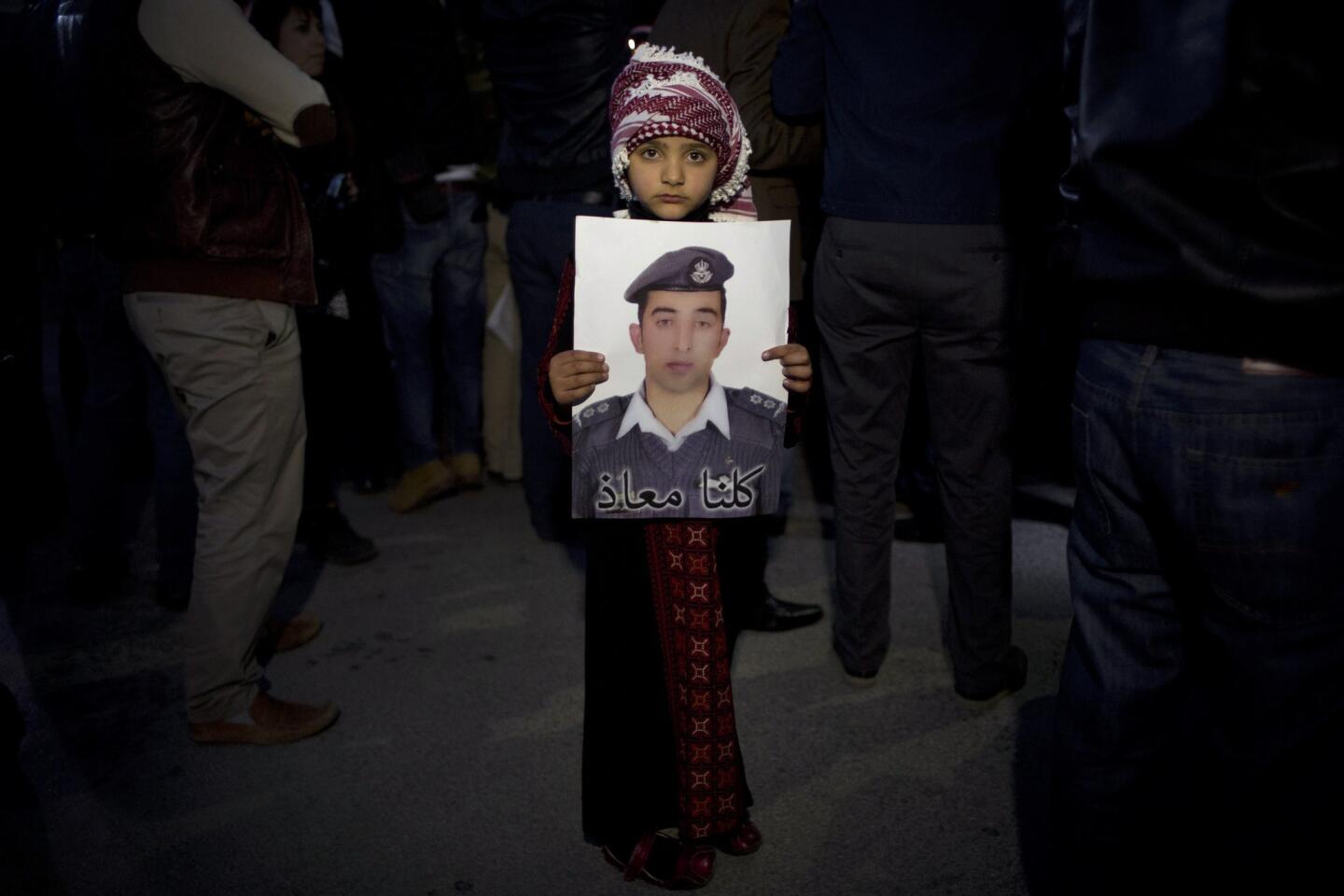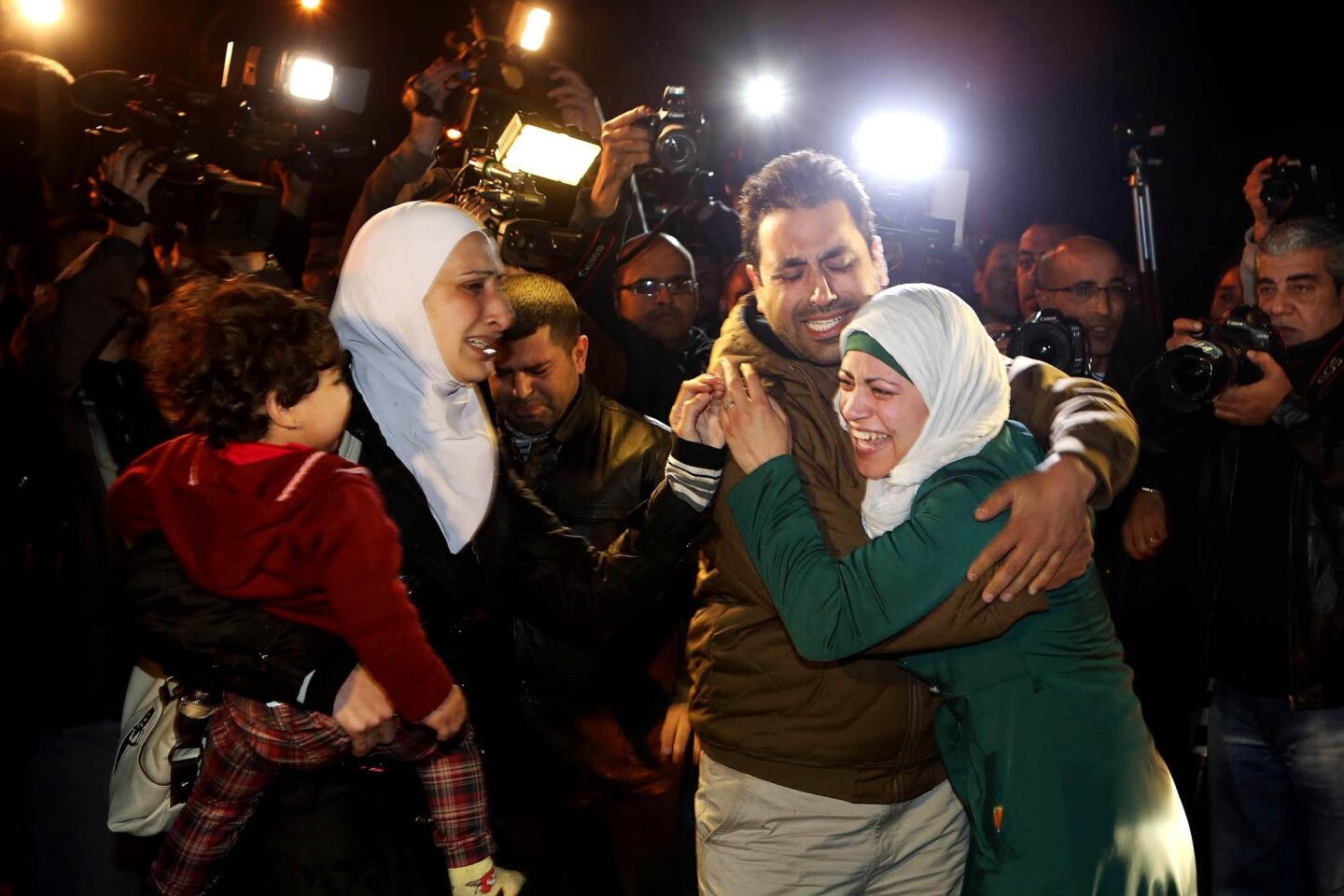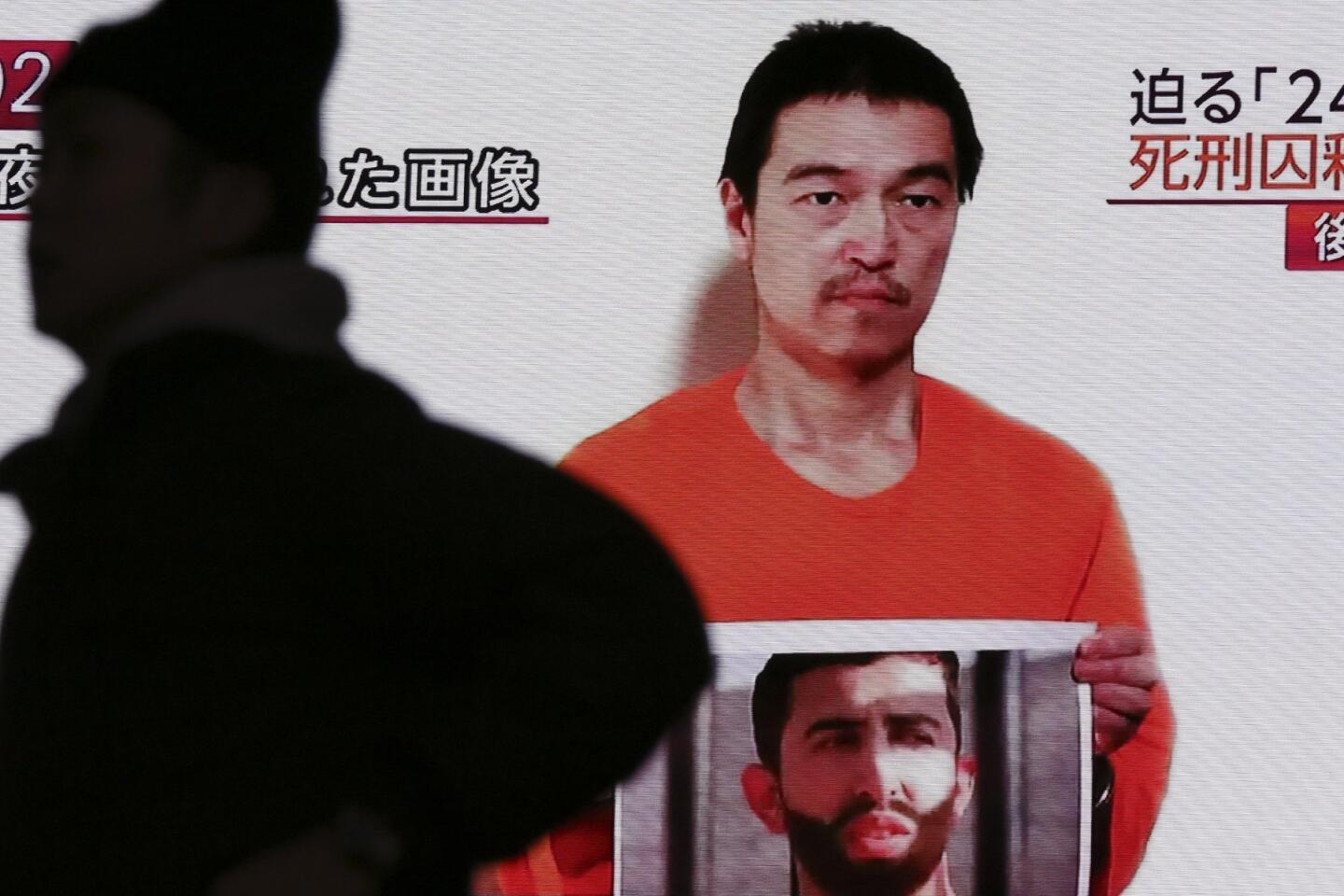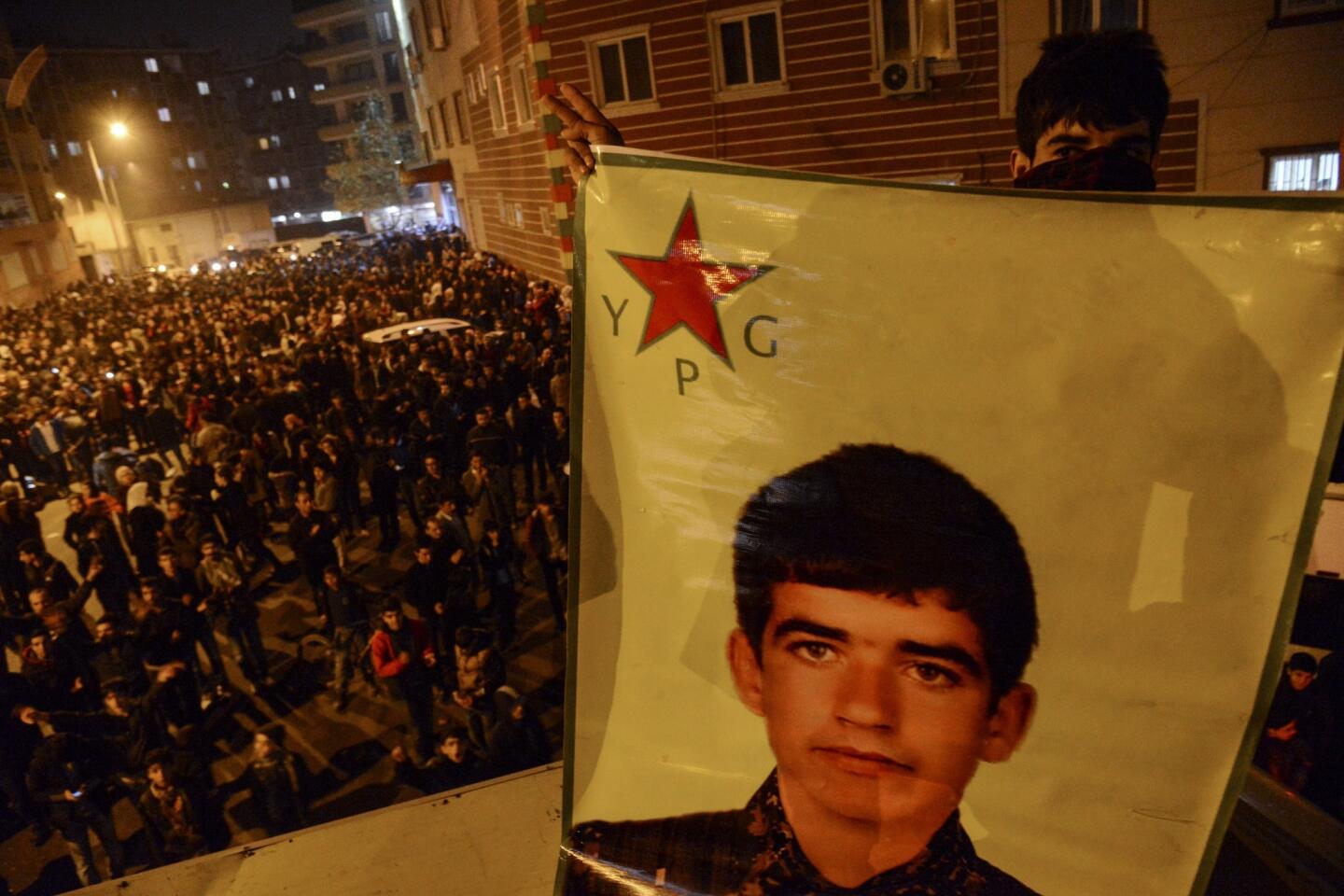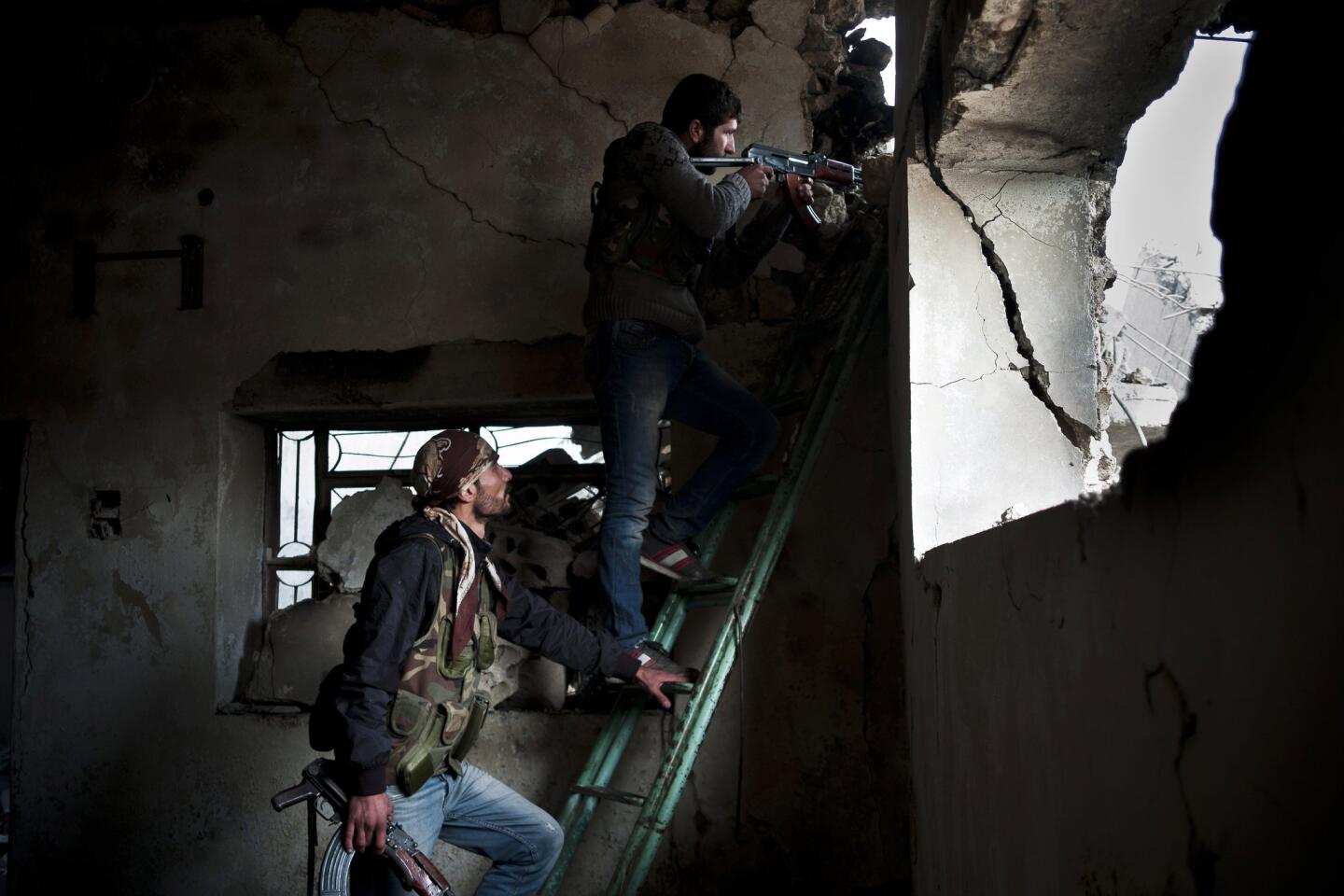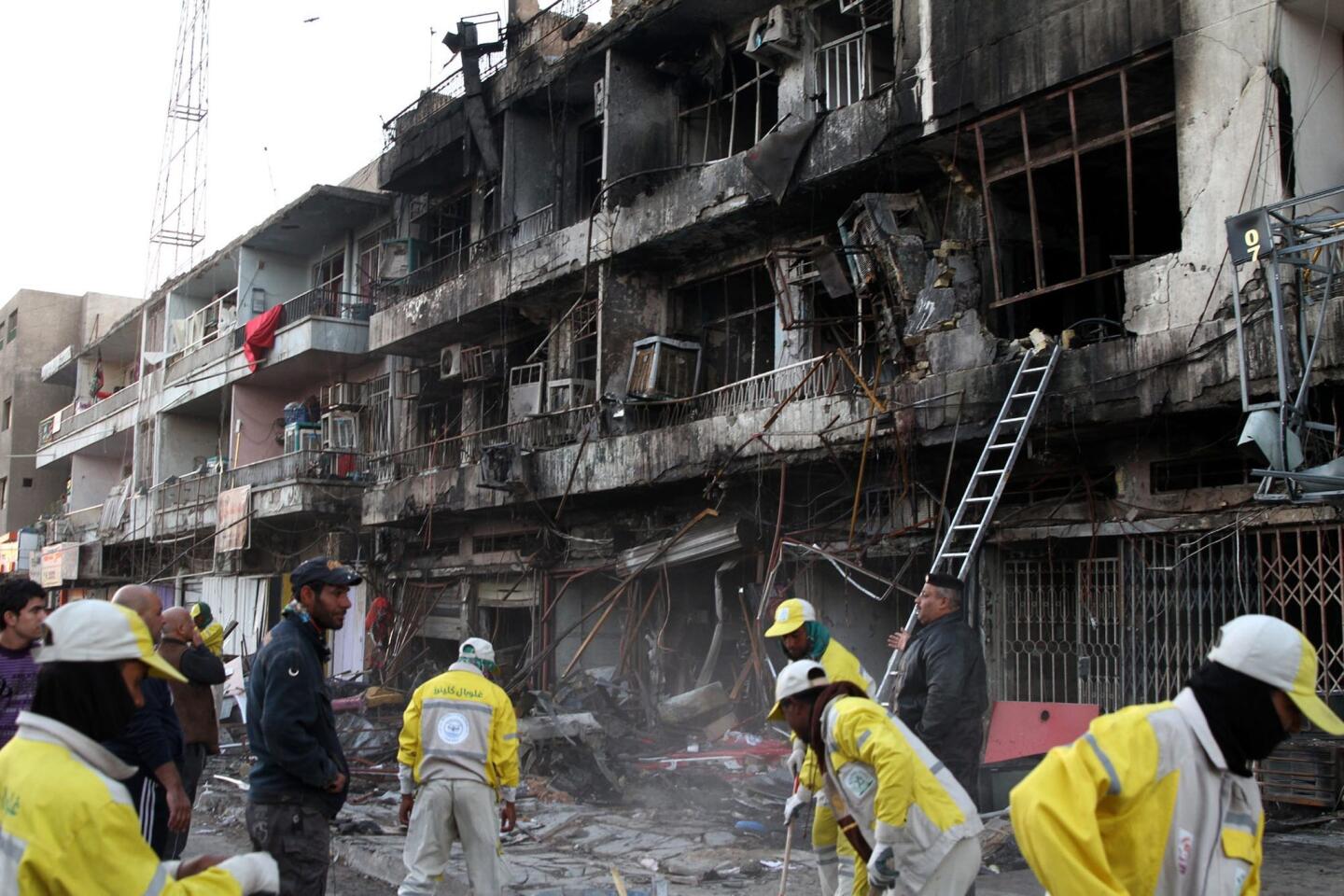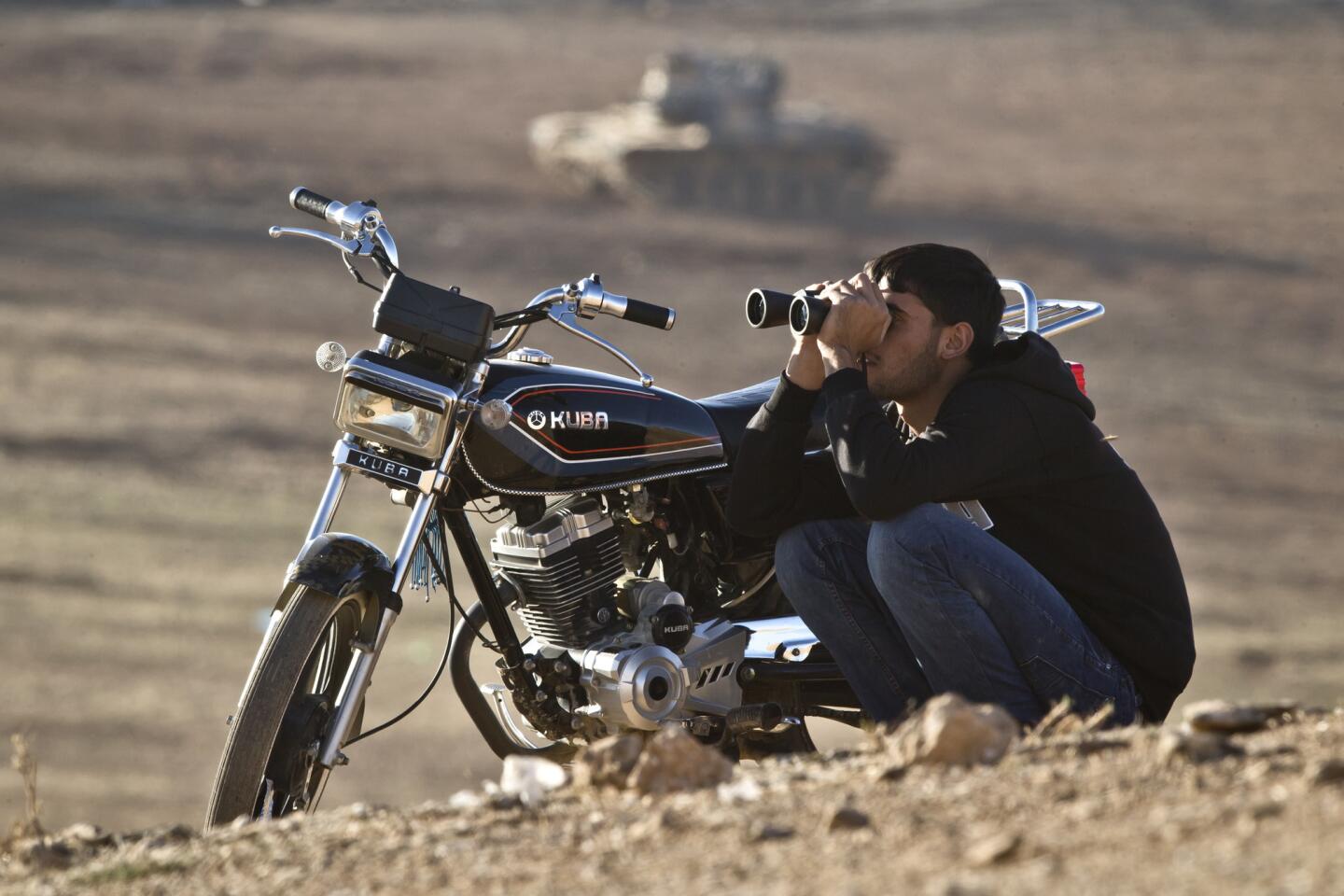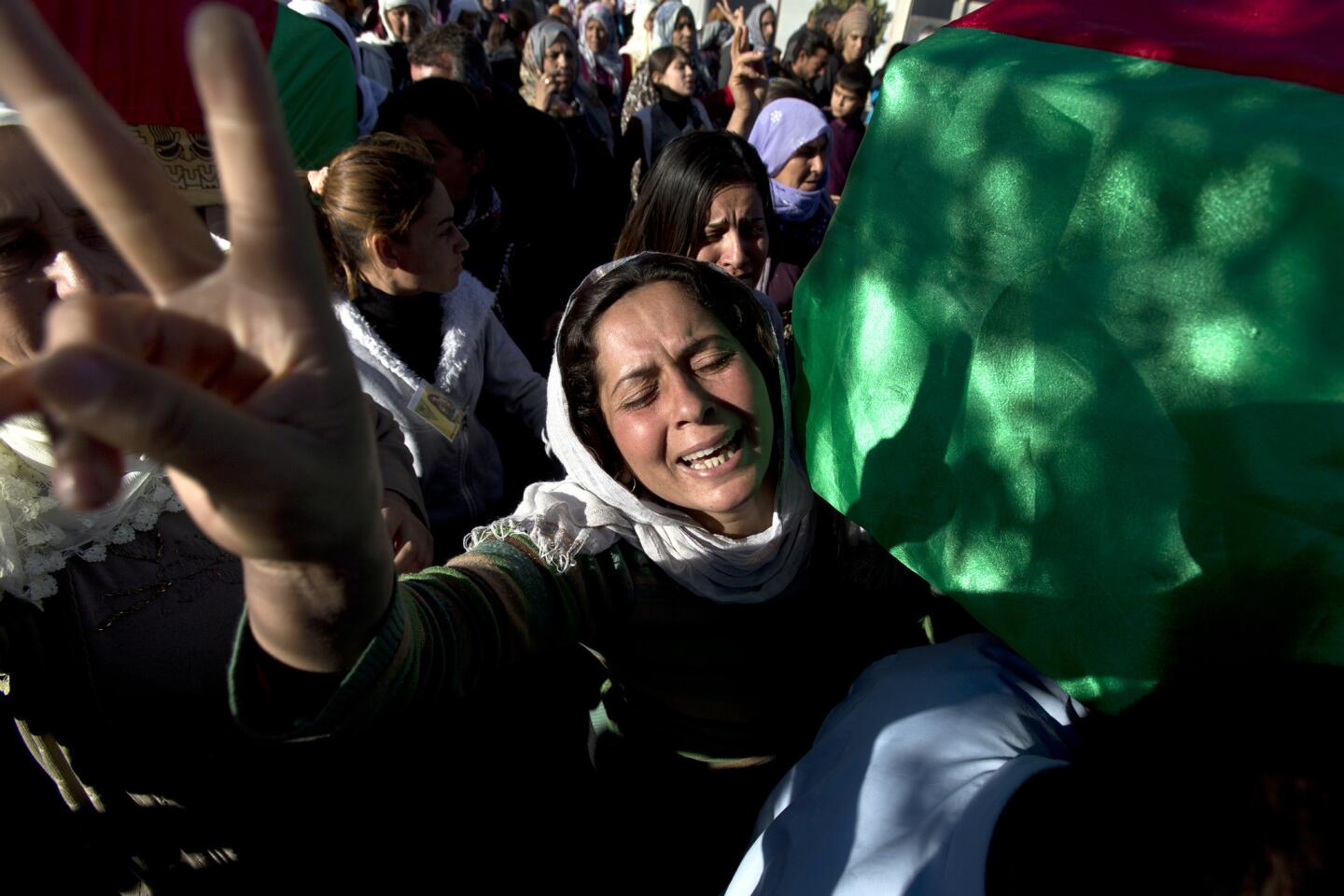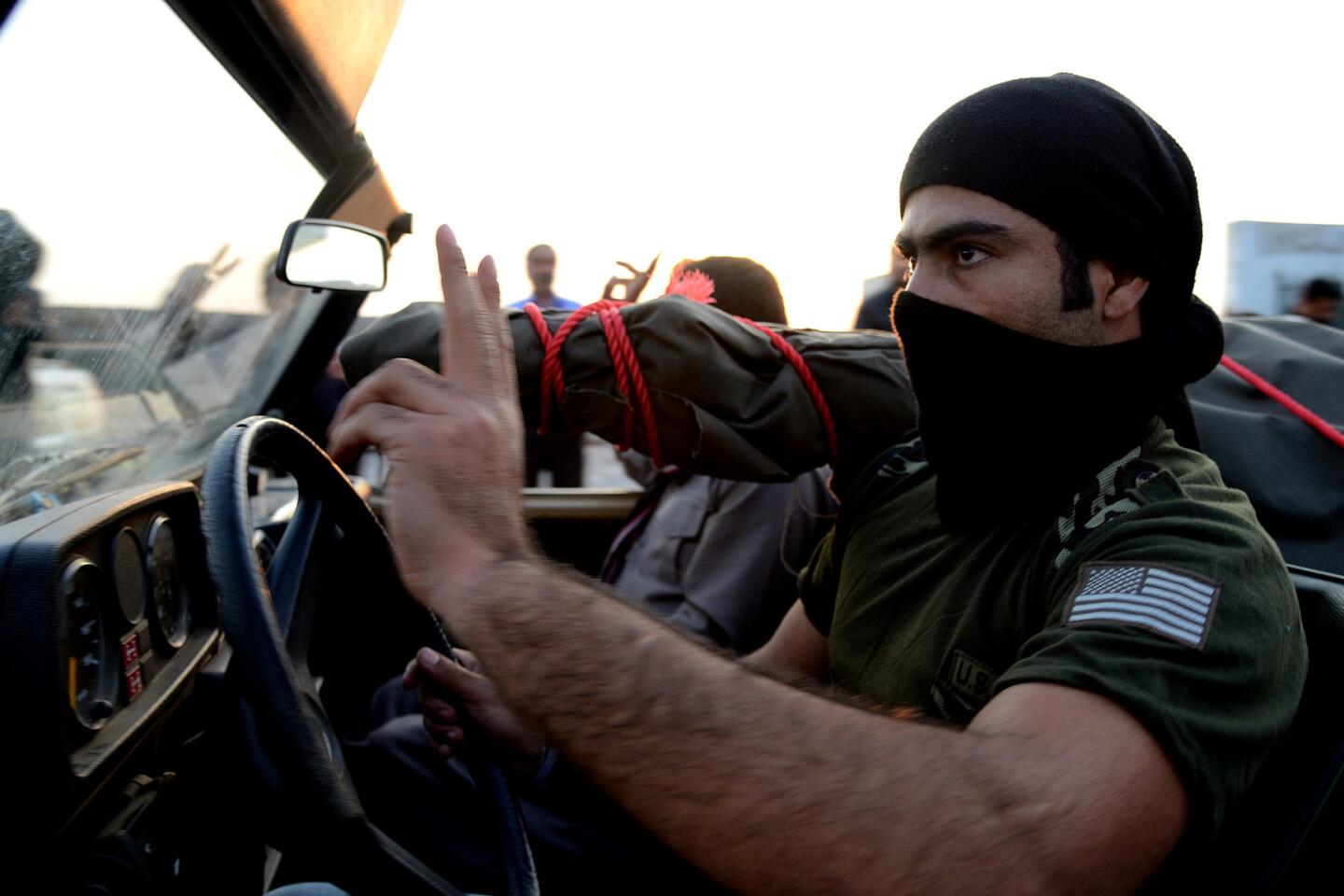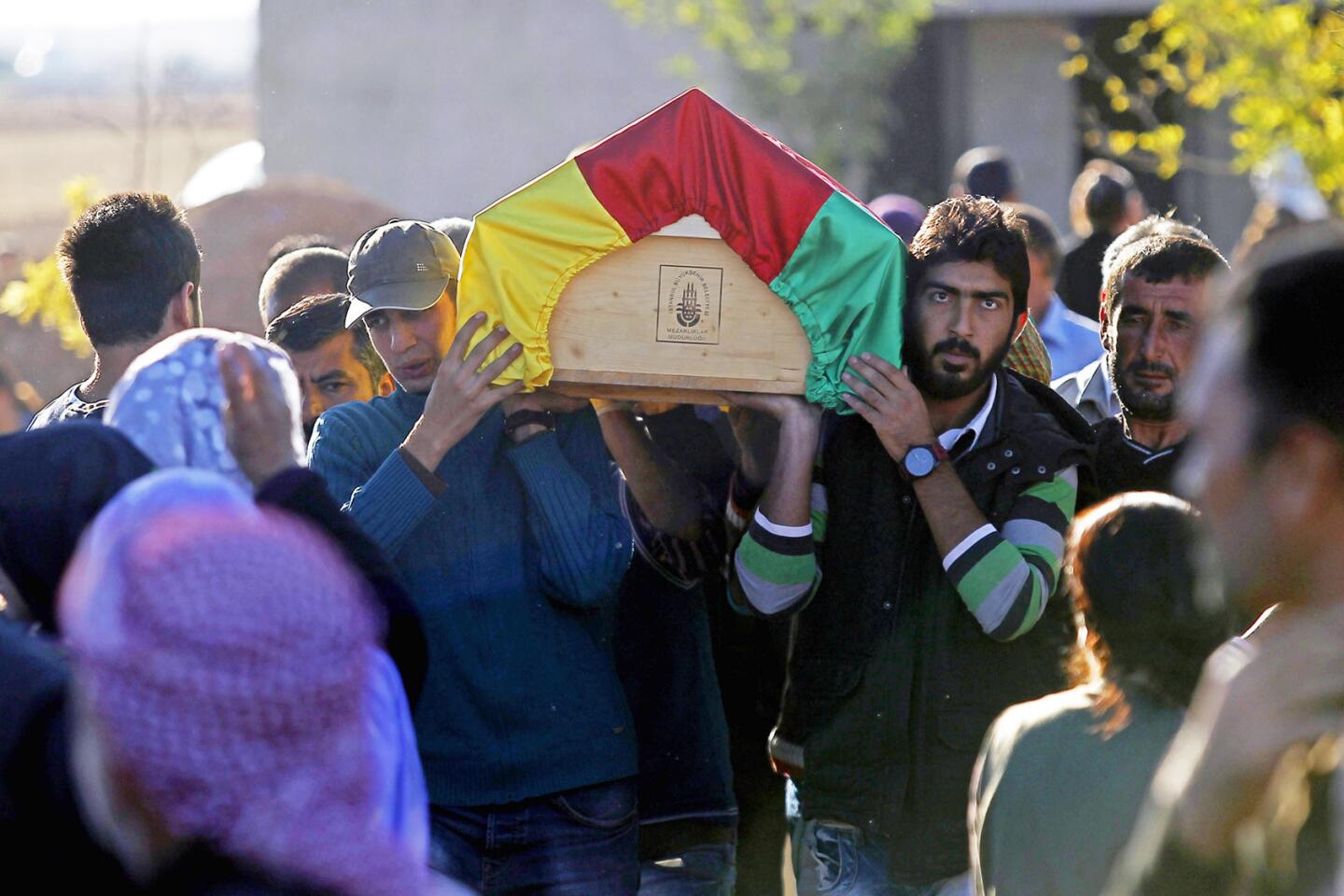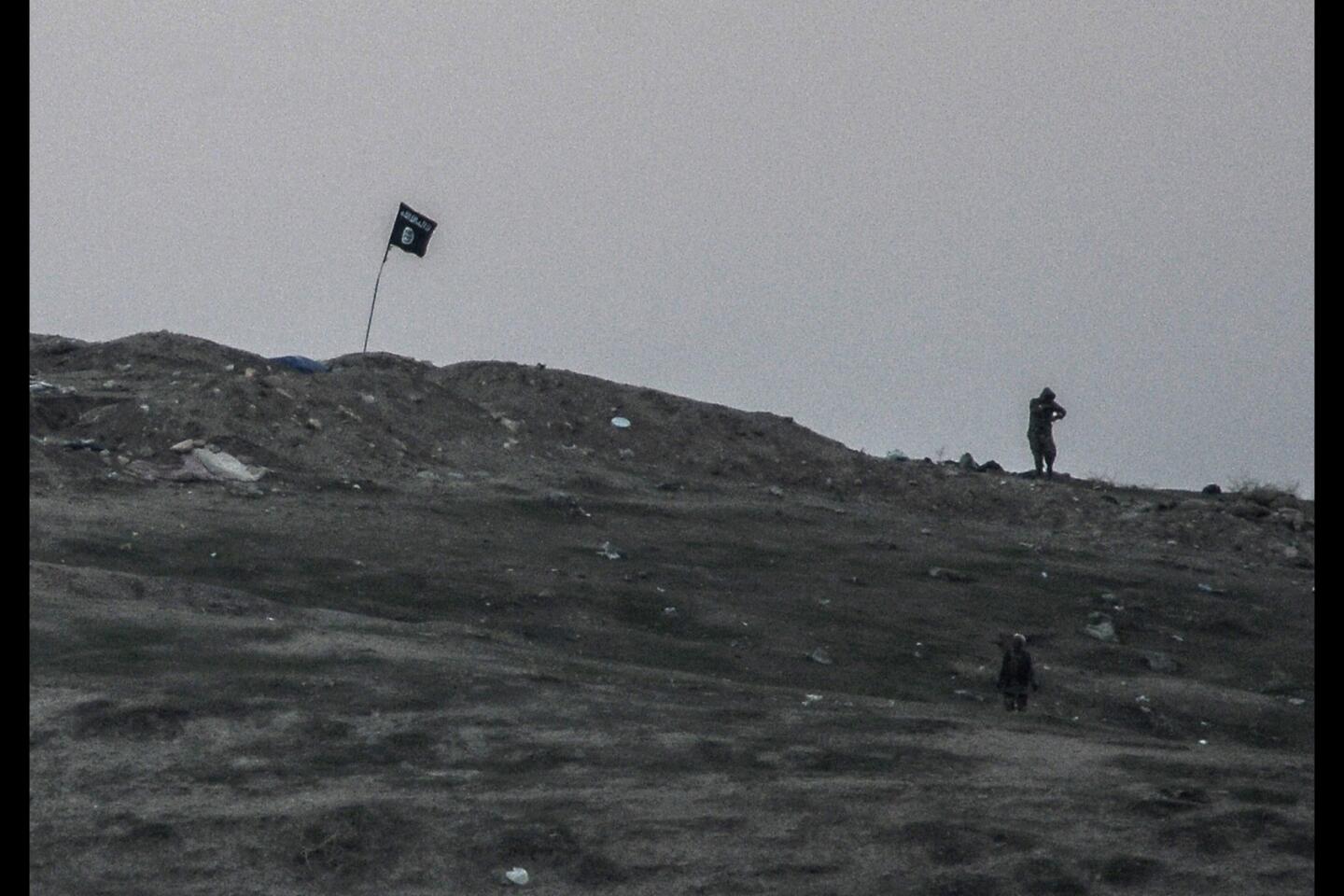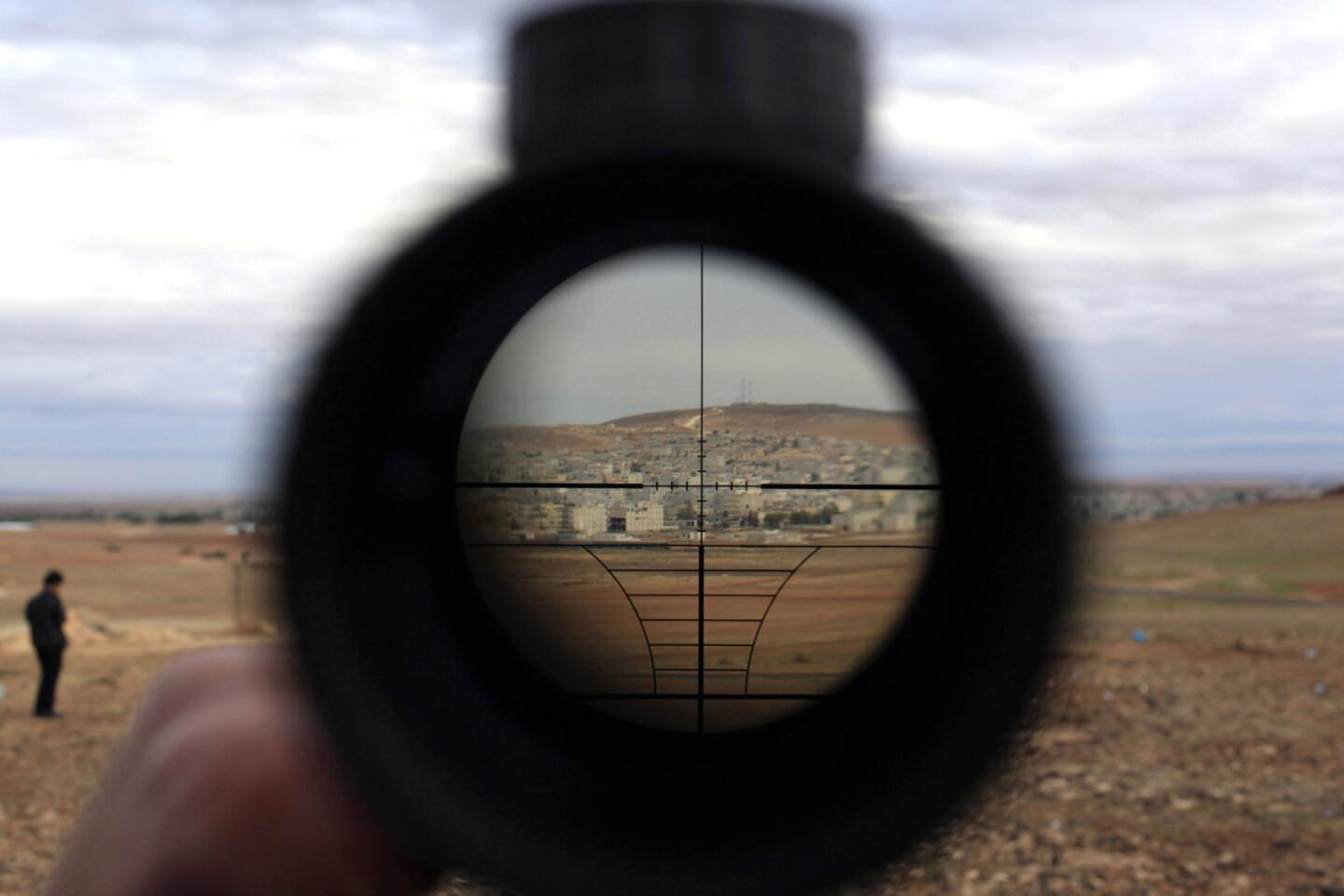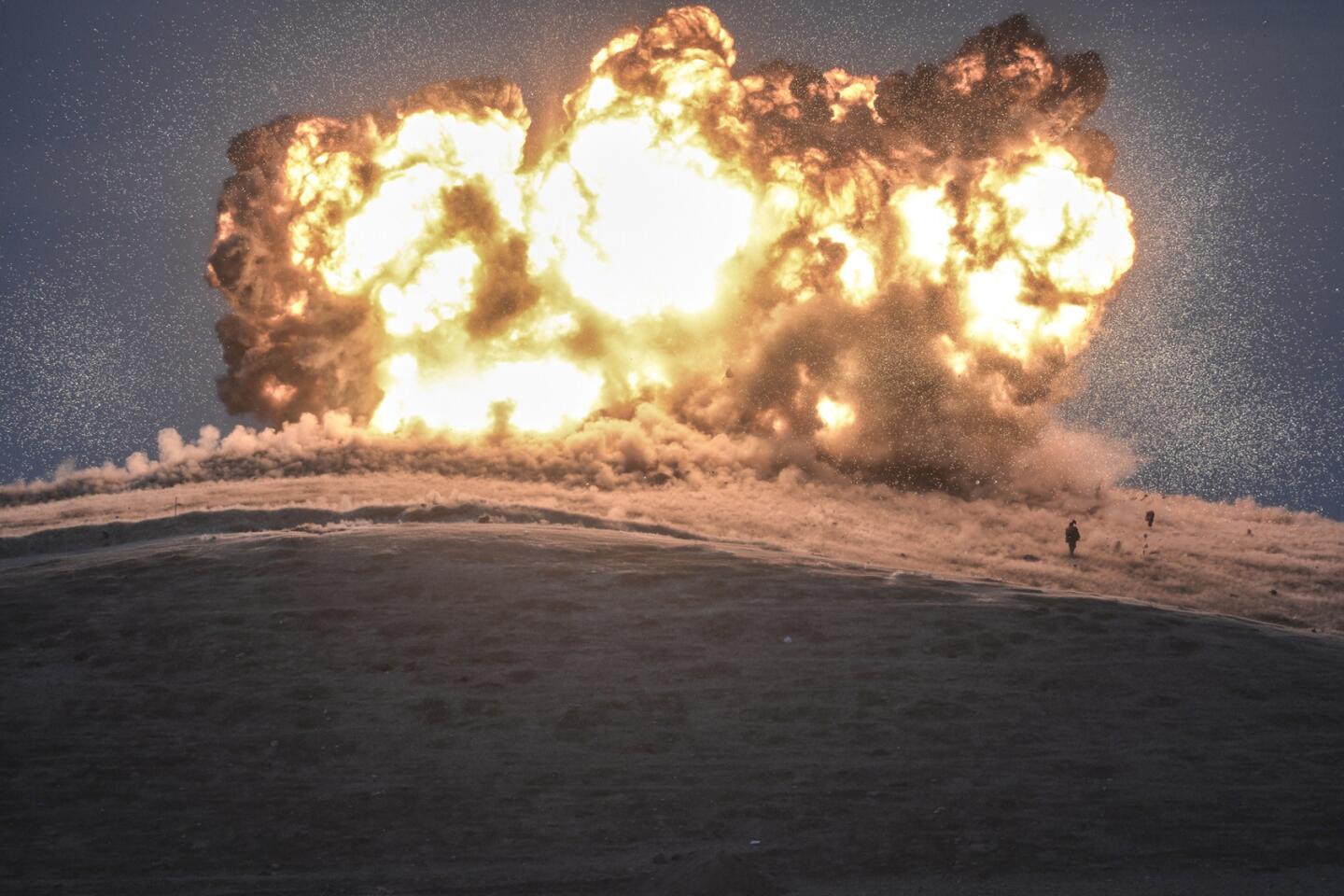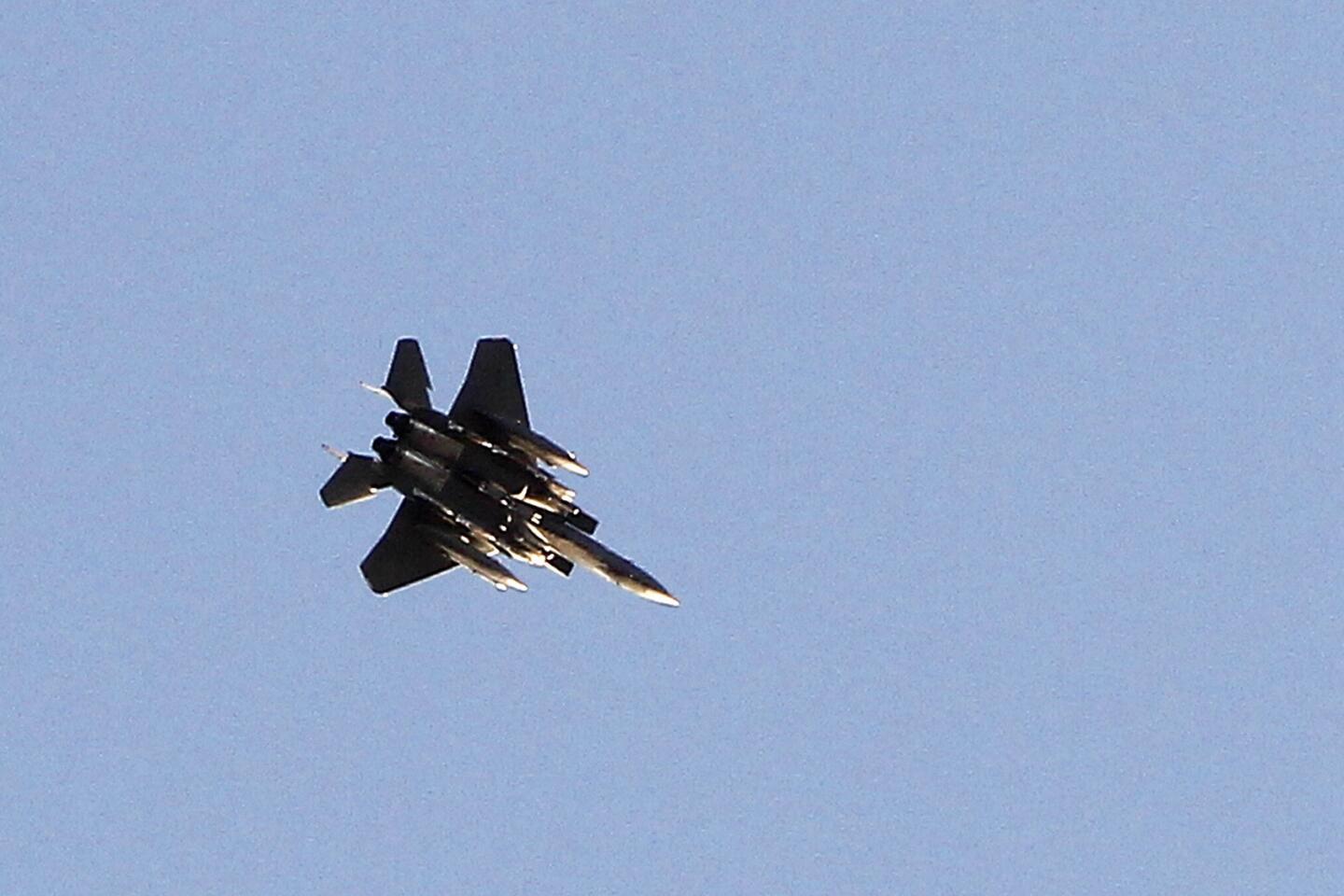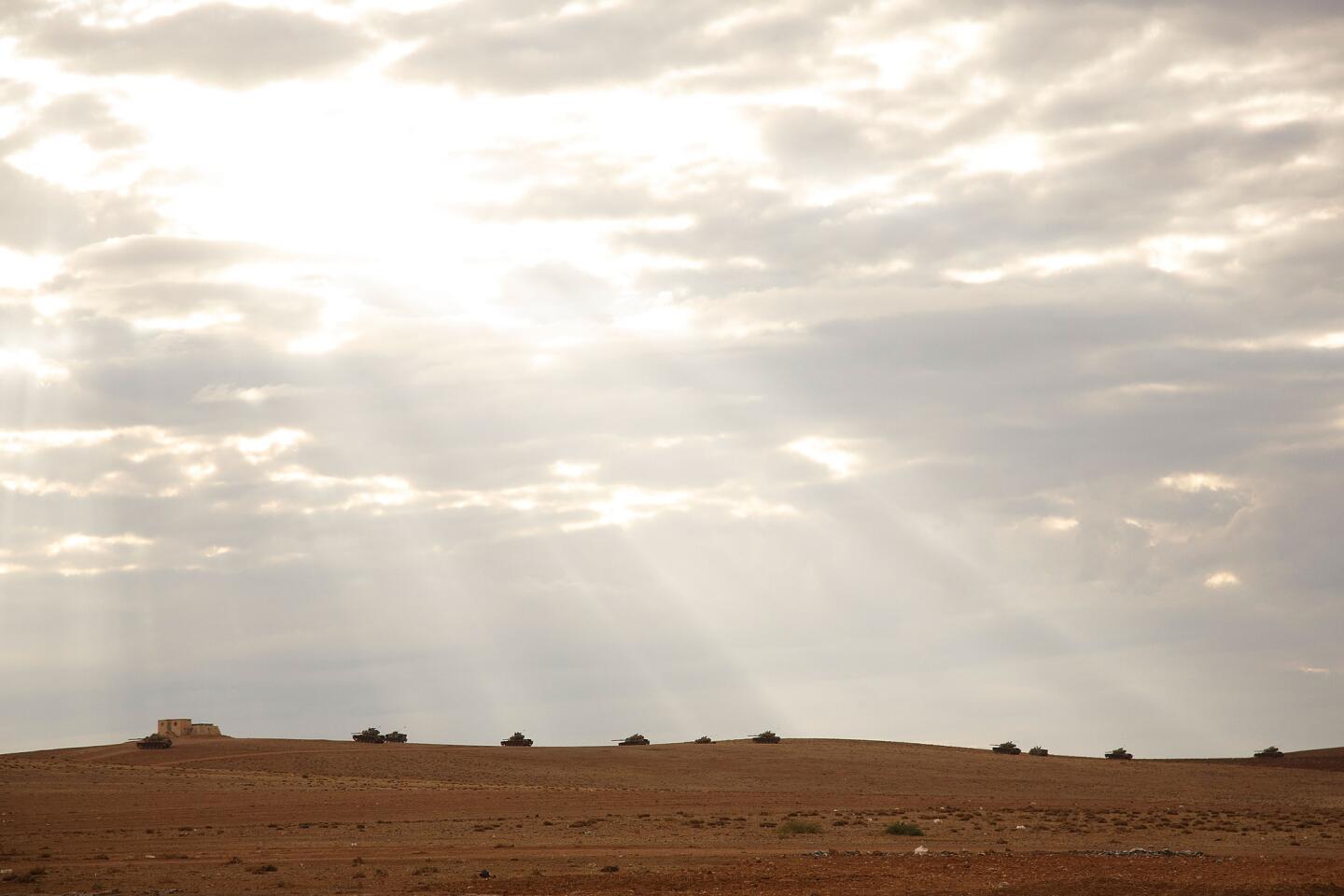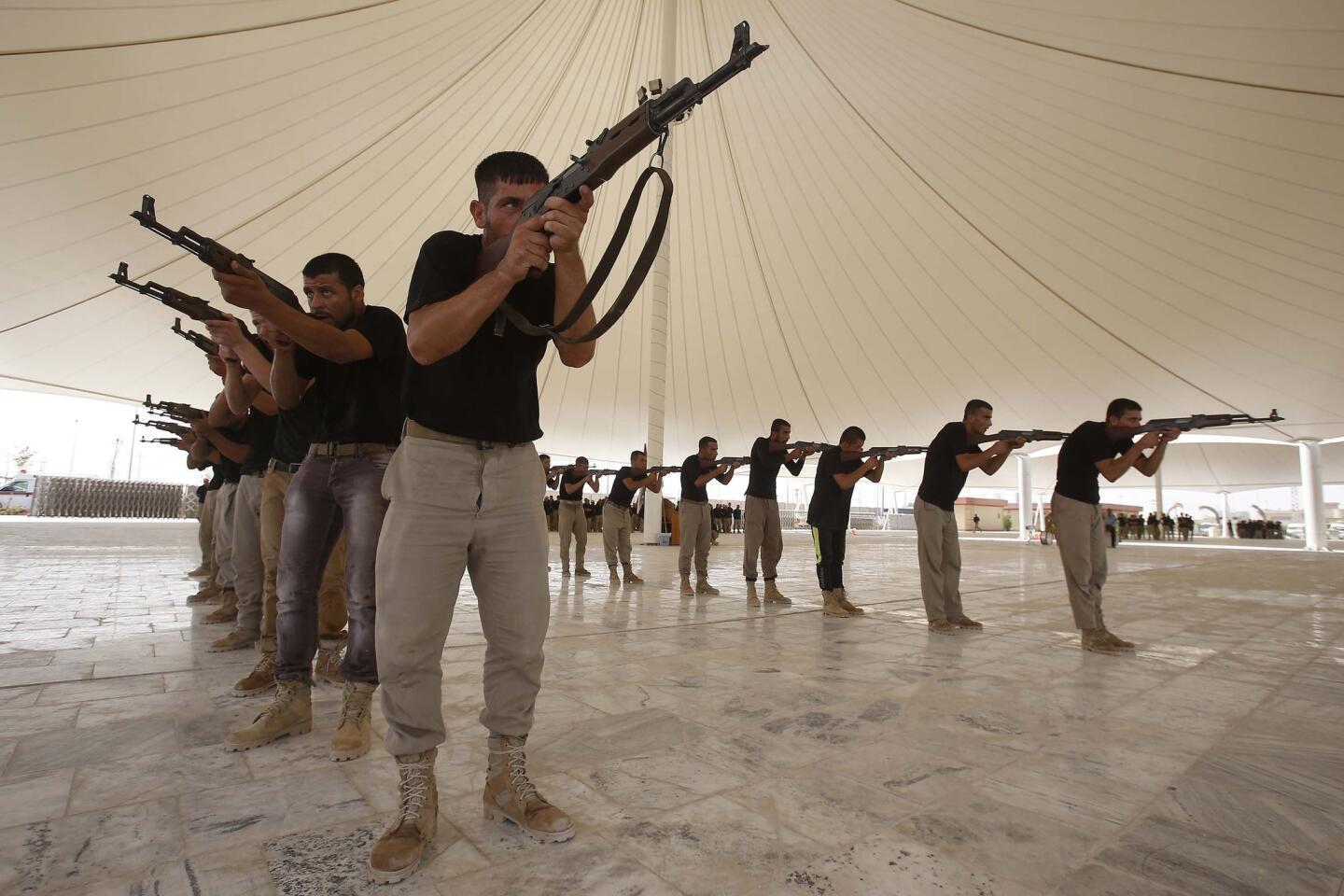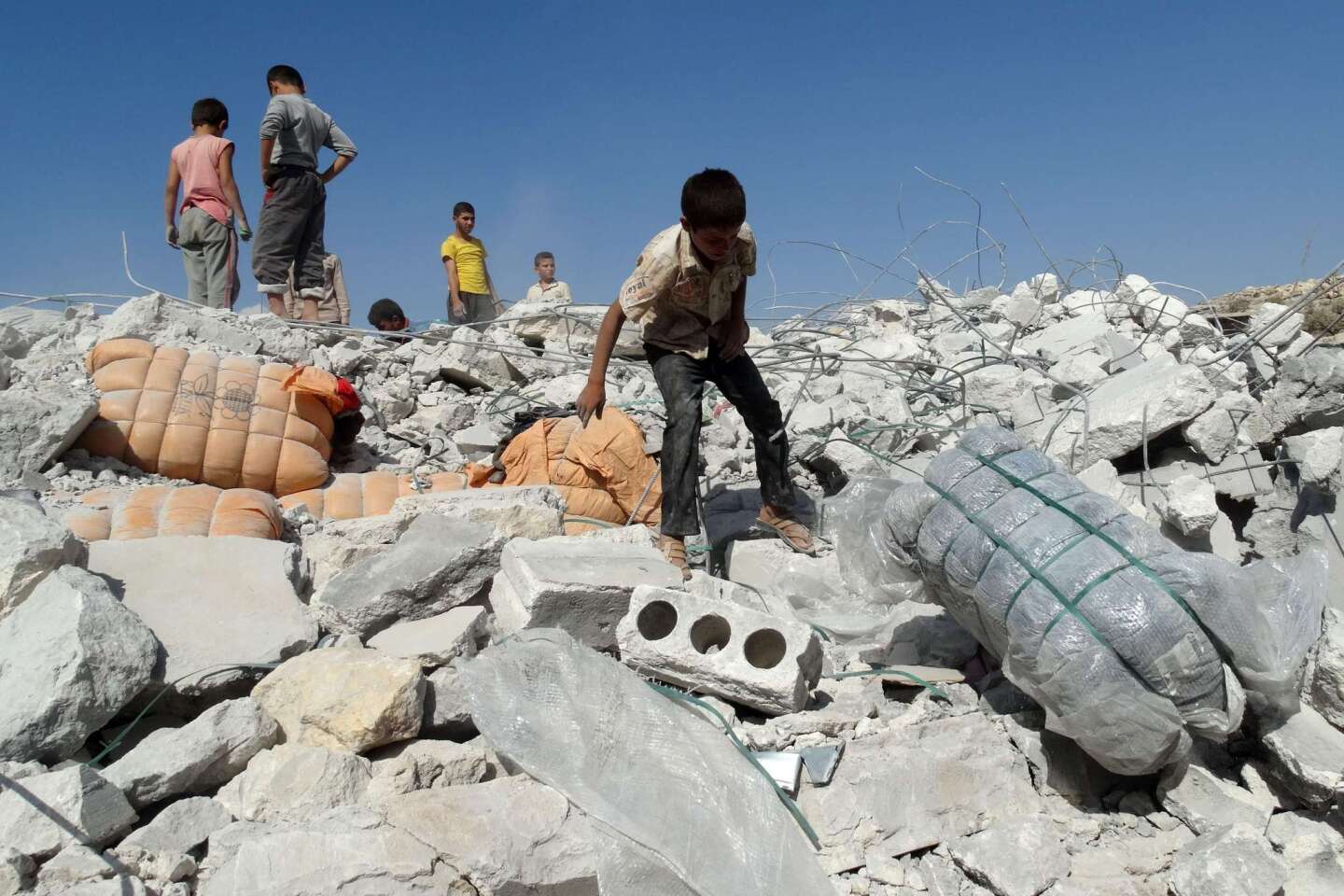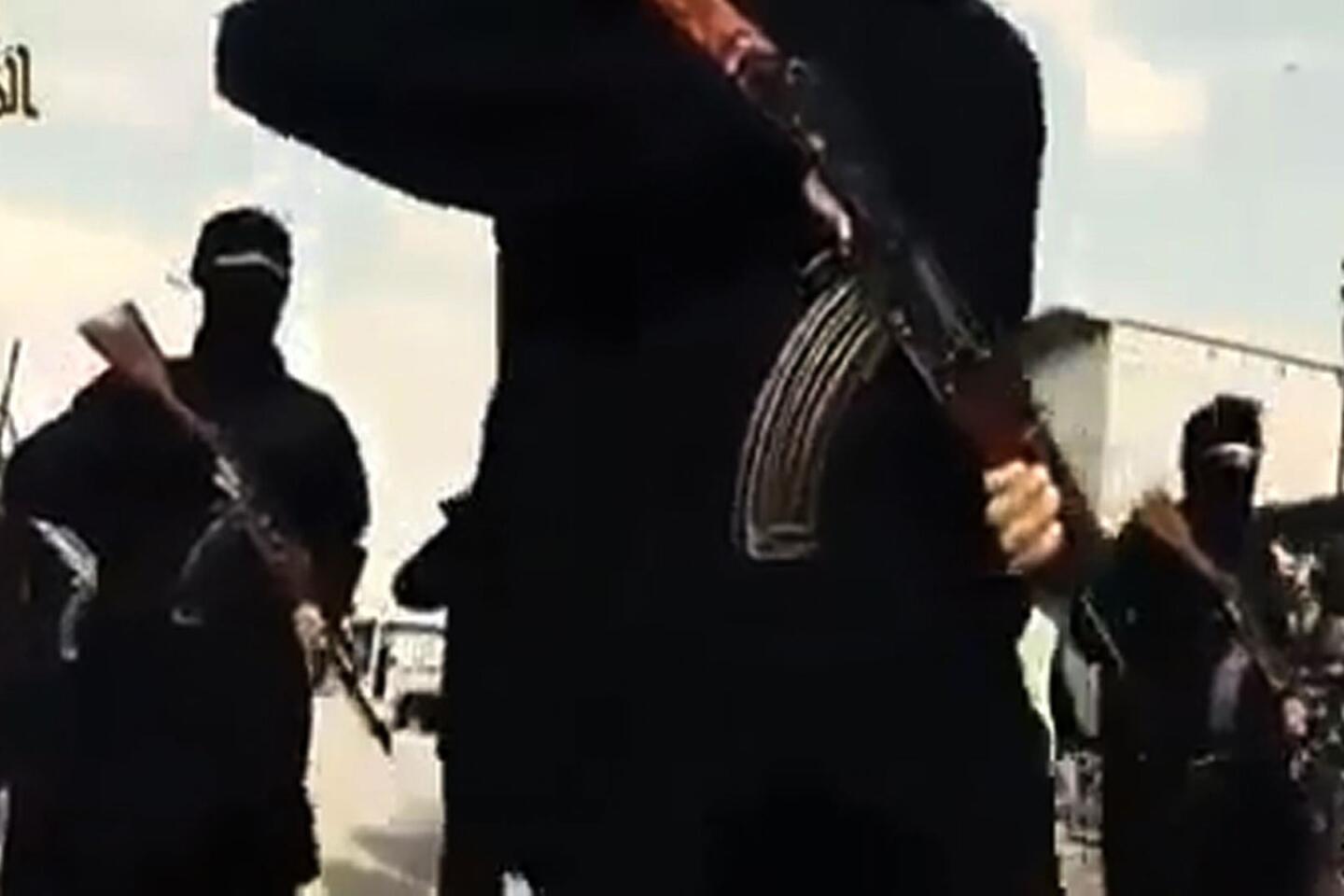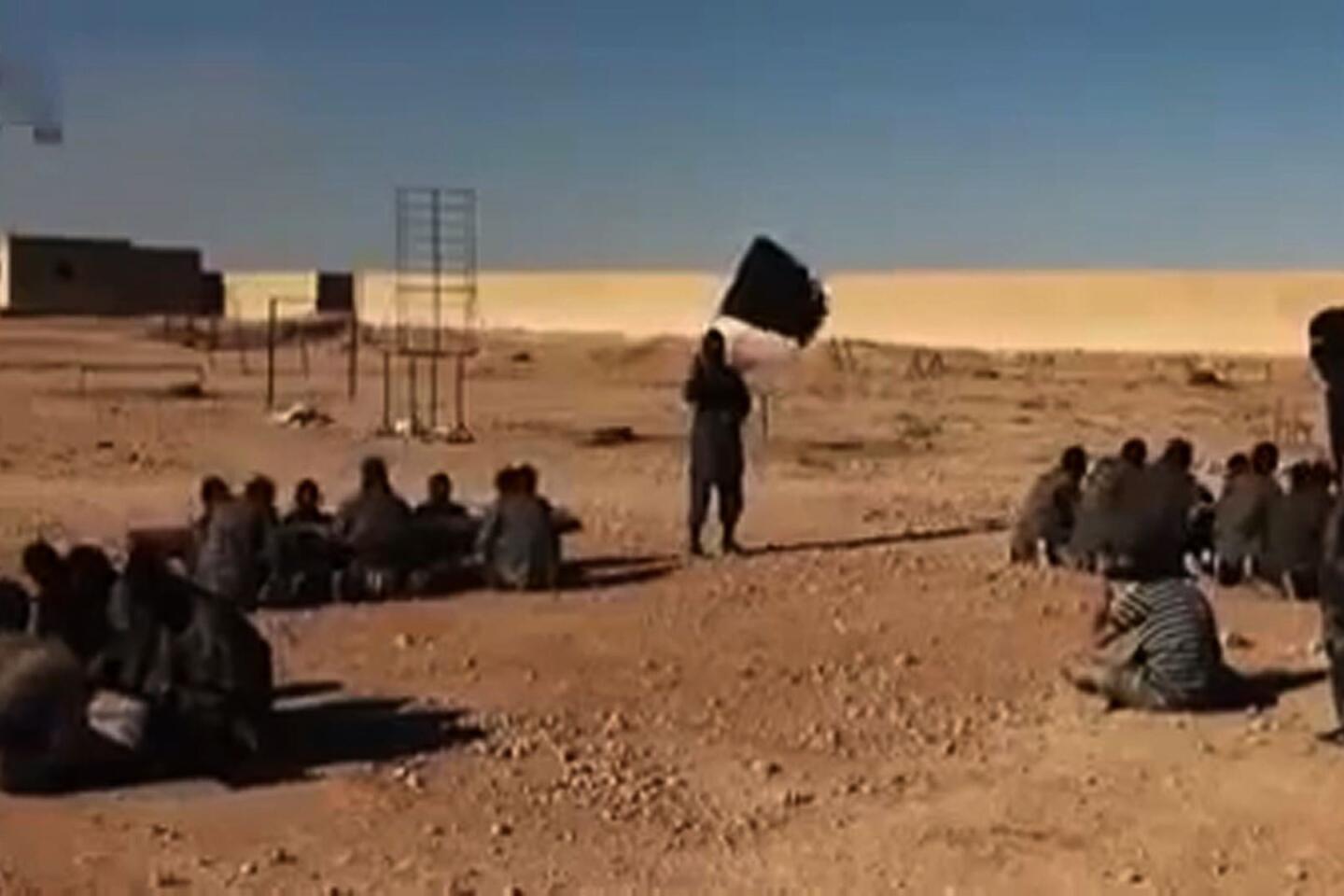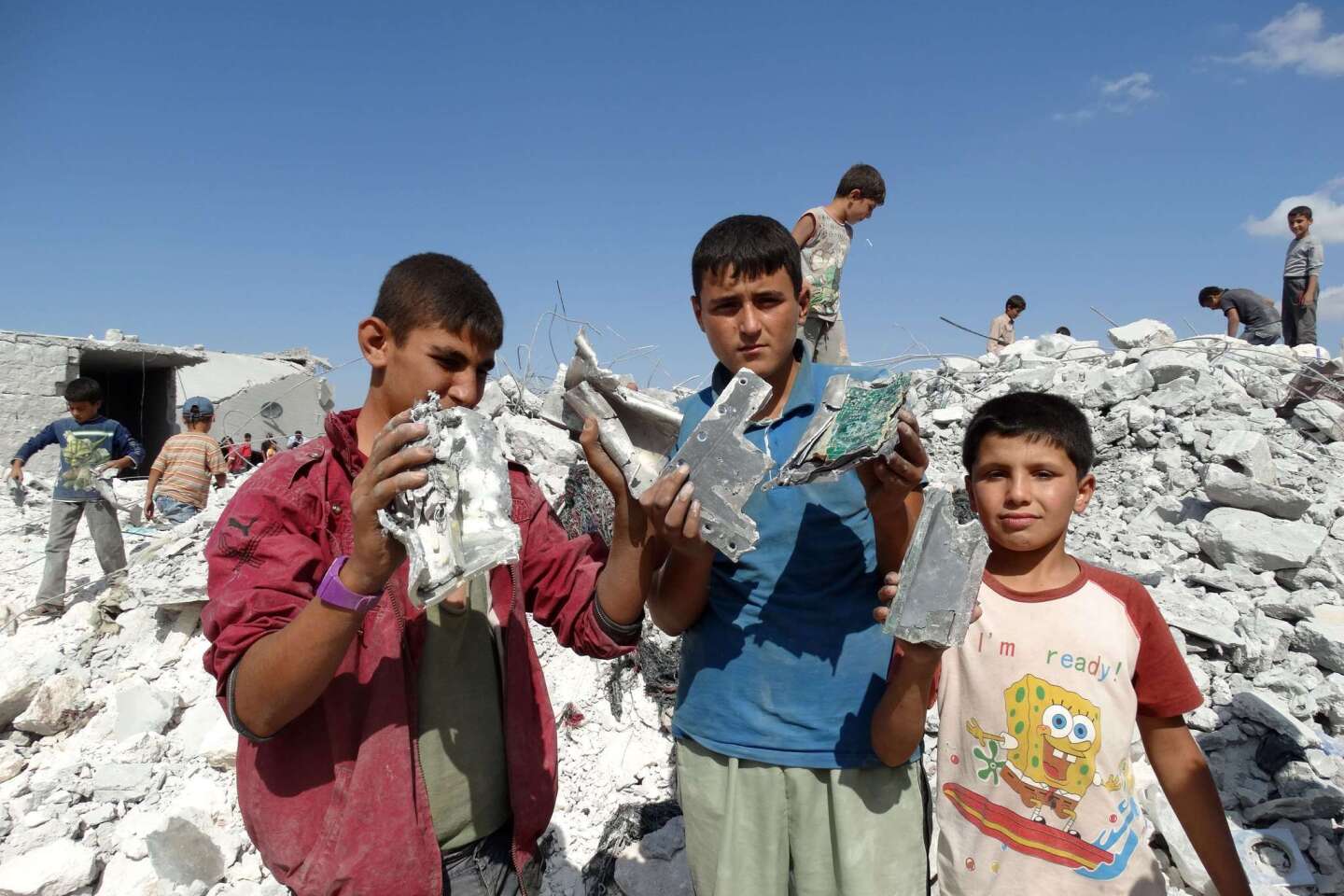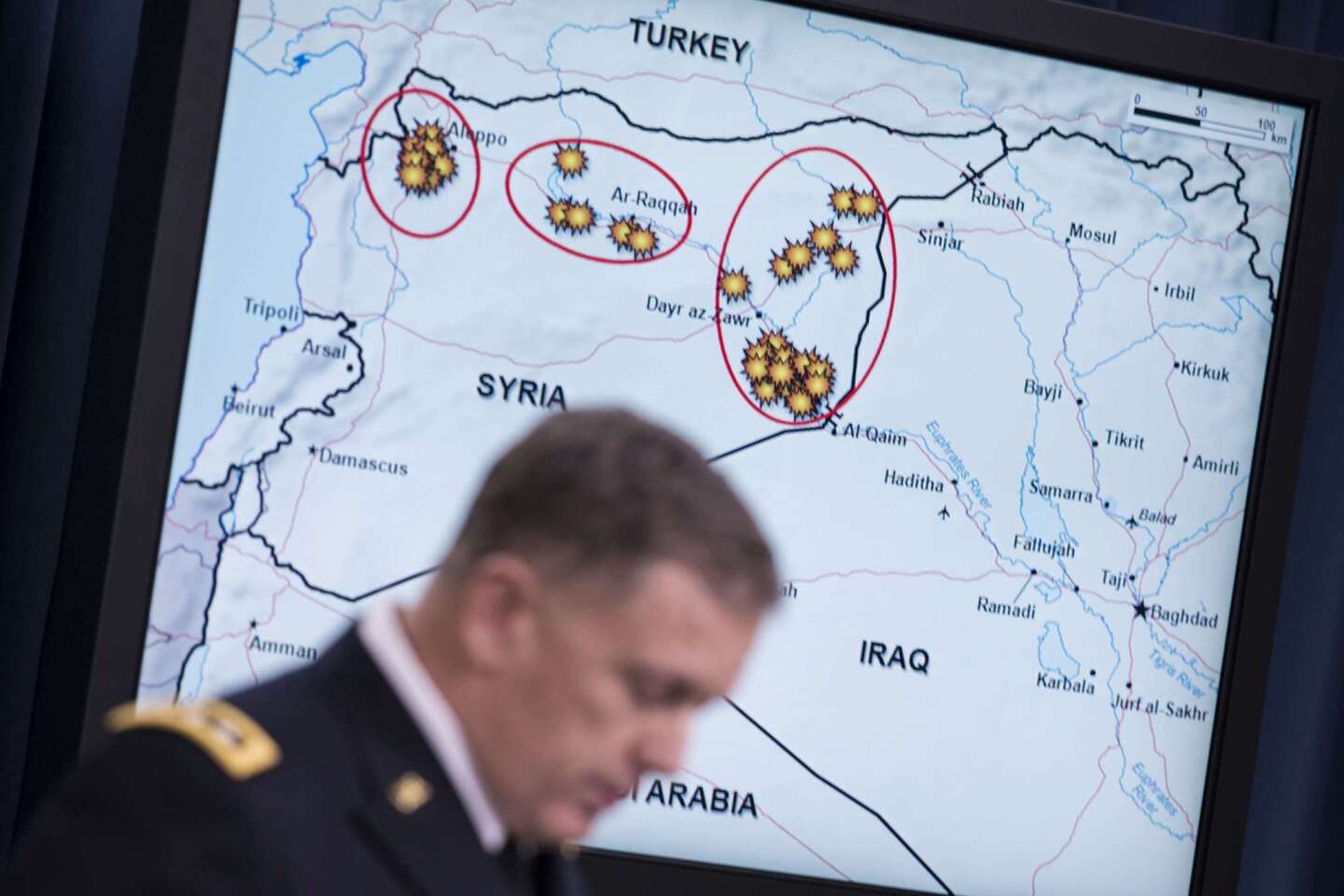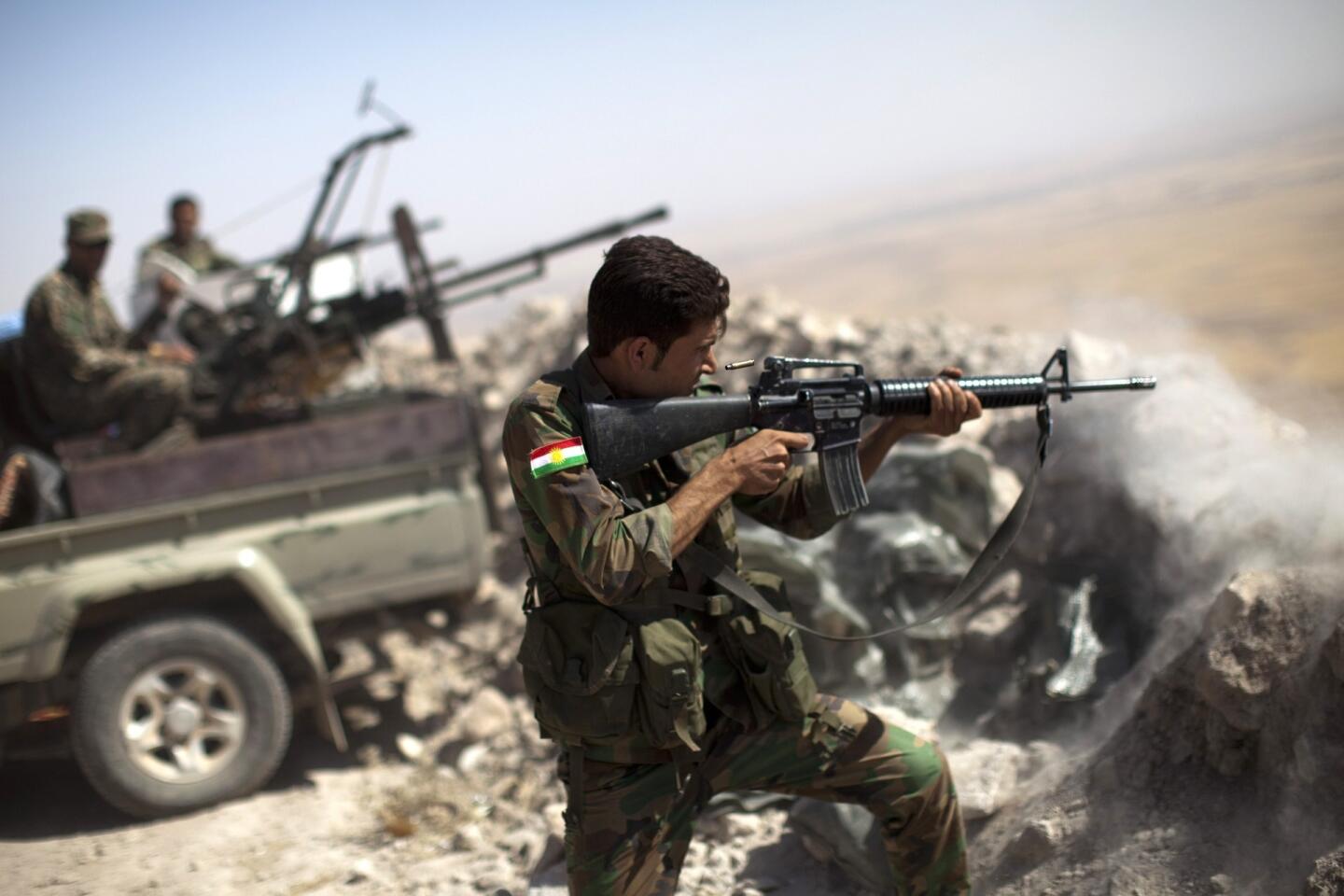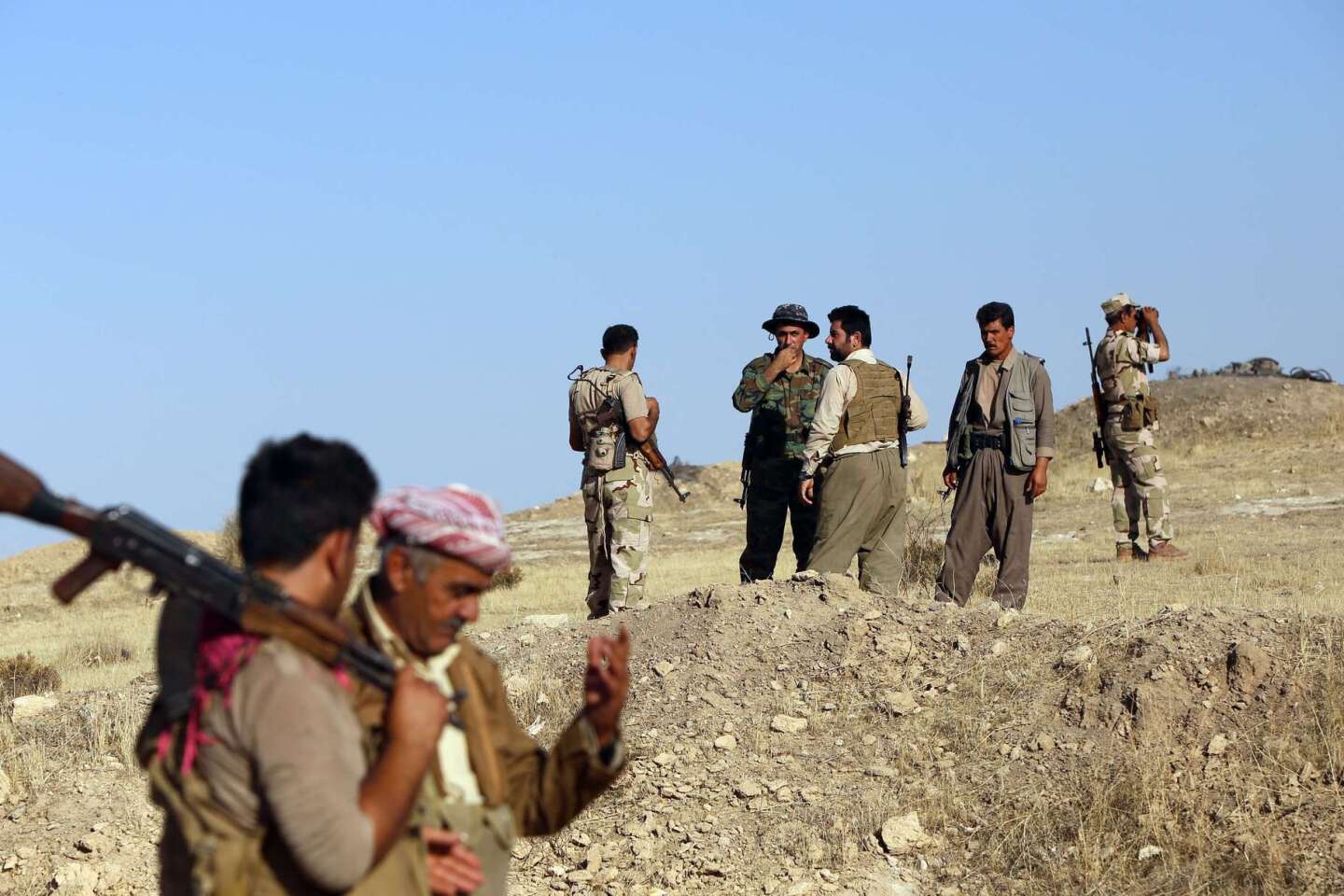Op-Ed: Want to beat Islamic State? Try the Afghan model, circa 2001
- Share via
President Obama, who swept to power in 2008 in part on his promise to pull U.S. troops out of Iraq, is clearly a reluctant warrior. His concern about getting involved in “mission creep” in the deserts of Iraq, where nearly 4,500 troops have died, recently led him to make this promise to U.S. soldiers: “I will not commit you and the rest of our armed forces to fighting another ground war in Iraq.” Instead, Obama has asked Congress to authorize a plan to arm and train 5,000 “vetted, moderate” Syrian rebel troops in Saudi Arabia to take on the Islamic State militants, whose army the CIA estimates has swollen to as many as 31,000.
But we have been down this road before. The U.S. trained the 250,000-man Iraqi army, yet this force fled in panic from Mosul when Islamic State fighters attacked in June. It is doubtful that the small band of U.S.-trained Syrians can take on Islamic State, which may outnumber them six to one.
Clearly, if the United States is to roll back the Islamic State offensive, it needs U.S. boots on the ground. But this does not mean that Obama needs to send in another “surge” of troops to fight directly in places like Mosul and Fallouja. There is an alternative that has proved to be incredibly effective in the past. Namely, the use of small numbers of U.S. Air Force combat controllers and Green Berets to call in airstrikes on Islamic State targets.
Combat controllers and Green Beret SOFLAM (Special Operations Forces Laser Marker) members are small teams of spotters whose specialty is calling in bomb strikes by drones and bombers. They made headlines in November 2001 when they directed laser-guided bombs and satellite-guided 2,000-pound bombs down on the Taliban’s lines.
Moving furtively around the mountain battlefields of Afghanistan alongside allied Northern Alliance tribesmen who protected them, these teams wreaked havoc on the Taliban. The U.S. military spotters trained lasers on Taliban targets from afar. U.S. aircraft wiped out the targets with such deadly precision that the allied Northern Alliance commander, Abdul Rashid Dostum, bragged to his Taliban enemies on the radio that he had a “death ray.”
By Nov. 9, 2001, the combat controllers and Green Berets, acting as a “force multiplier,” had enabled the outgunned Northern Alliance to go on the offensive. Within a week the Taliban, which had seemingly been dug in for a fanatical defense, was forced into retreat and abandoned Kabul and the northern half of the country. This military victory was achieved with about 300 U.S. boots on the ground in this Texas-sized mountainous land defended by an enemy every bit as fanatical as Islamic State. One American died in this operation.
In Iraq today we have a similarly determined enemy dug in over an area the size of Maryland. We also have local allies on the ground who can go on the offensive and act as a proxy army similar to the Northern Alliance in Afghanistan. These allies include the Kurdish peshmerga fighters, Shiite Muslim militias, Iraqi army troops and a growing number of Sunni Muslim militias opposed to Islamic State. These indigenous troops can act in a force-protection role similar to that of the Northern Alliance and allow small teams of combat controllers and Green Berets to get near enemy lines and target them for precision bombing raids.
One cannot overemphasize the effect that such targeted bombings have on the morale of an enemy that is “degraded,” as the Taliban was. Although the situation is more complicated in Syria, U.S. spotters armed with laser target designators can embed there with Free Syrian Army and other moderate forces to call in precise bomb strikes.
This solution could allow U.S. surrogates on the ground in the region to seize the initiative from an emboldened enemy without sending in large numbers of U.S. troops. The Afghan model shows this can work.
Brian Glyn Williams is a professor of Islamic history at the University of Massachusetts-Dartmouth and the author of “The Last Warlord. The Life and Legend of Dostum, the Afghan Warrior Who Led U.S. Special Forces to Topple the Taliban Regime,” based on his fieldwork in Afghanistan with Dostum.
Follow the Opinion section on Twitter @latimesopinion
More to Read
Sign up for Essential California
The most important California stories and recommendations in your inbox every morning.
You may occasionally receive promotional content from the Los Angeles Times.
